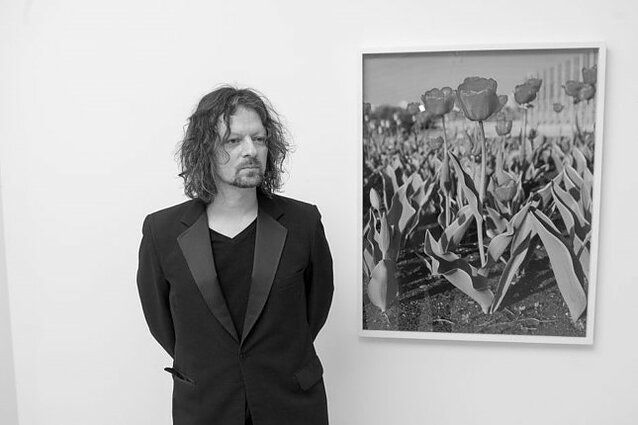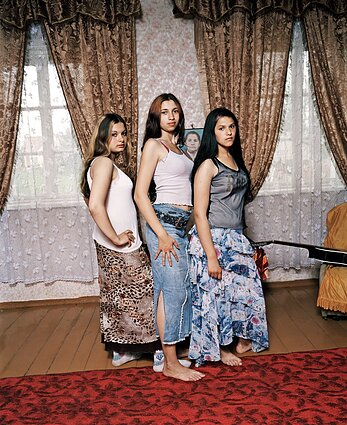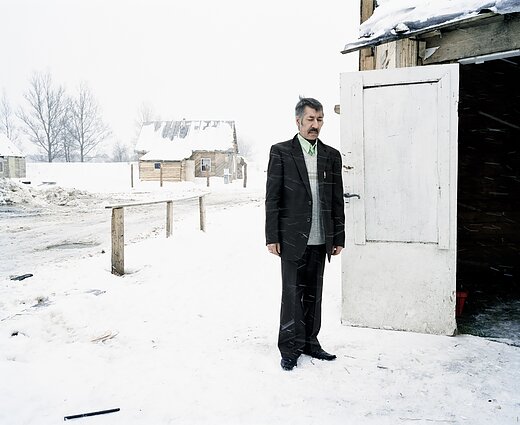
Photographer Andrew Miksys has an inside view
Andrew Miksys (b. 1969) is a native of Seattle. His photography has been shown nationally and internationally including exhibitions at the New Orleans Museum of Art, Vilnius Contemporary Arts Centre, and De Appel Contemporary Arts Centre in Amsterdam. In 2002 he was selected by Photo District News as one of the “top 30 emerging photographers to watch” and in 2006 he was featured in Slate Magazine as “Slates’ Artist of the Month.” Miksys has also been the recipient of prestigious grants from the John Simon Guggenheim Foundation (2000) and the J. William Fulbright Program (1998 and 2002). He currently divides his time between Seattle and Vilnius, Lithuania.
 The Lithuanian-American photographer has been documenting the life of the Roma people in Lithuania for the past 20 years. According to him, the dismantling of the former Roma settlement in Vilnius was an unfortunate event that he talks about in a new exhibition at MO Museum.
The Lithuanian-American photographer has been documenting the life of the Roma people in Lithuania for the past 20 years. According to him, the dismantling of the former Roma settlement in Vilnius was an unfortunate event that he talks about in a new exhibition at MO Museum.
Miksys’ photo series Baxt – meaning fate, destiny, fortune in Romani – has already had an eventful and long life. The author first started photographing Roma people in Lithuania in 1999. The series was released as a book in 2007. Miksys is currently working on the second Baxt book, exhibiting his work in Vilnius in the meantime.
Miksys grew up in Seattle. His father was born in Kaunas during World War II. As the Soviet army approached Lithuania, the family decided to move to the West and eventually arrived in the US. In 1995, the photographer’s mother encouraged her husband and son to go to Lithuania, visit relatives, and discover the family history.
“Until then, I knew very little about the country. I didn’t know the language,” Miksys said.
Miksys returned to Lithuania in 1999 after receiving a Fulbright scholarship. He undertook to create a photography series about Lithuania. First, he walked around Vilnius and later started travelling around the country.

Back then, he met a Roma family in Vilnius Šnipiškės district. In broken Lithuanian, he asked for permission to take their picture. At the time, he did not realize that the subjects were Roma, but they stood out from the homogenous Lithuanian society, Miksys said. According to him, this encounter was the beginning of the Baxt project. When Lithuanian friends saw Miksys’ portraits of Roma people, they warned him not to deal with the “terribly dangerous gipsies”. But he was not deterred. “If someone starts explaining how bad certain people are, I hesitate and want to see everything with my own eyes,” the photographer said.
He decided to visit the Roma settlement, called a taboras, in Vilnius Kirtimai district. At first, Roma people thought that Miksys was a journalist who wanted to discredit them. Over the next 20 years, Miksys travelled all over Lithuania, photographing local Roma people. According to him, most of them had integrated into the local communities and spoke perfect Lithuanian. But when Lithuanians talk about Roma, they associate them with the taboras and drugs. These negative images are mainly reinforced by the media, Miksys said.
In 2004, the Vilnius Municipality ordered the demolition of the Roma settlement in Vilnius. In its last days, Miksys visited the taboras regularly to document a place that would soon be gone.

The author continued the series until 2021, taking one photo every year until the area turned into a wasteland that Miksys now calls “Chernobyl”.
The Baxt exhibition at MO Museum also features an installation made of planks, burnt logs, and other objects found in the settlement. Portraits of Roma people who lived in taboras are displayed on old doors. According to Miksys, it symbolizes the hospitality of the people who welcomed him into their homes. Miksys creates in a style of directed photography. His subjects are put in front of the camera and look directly at the spectator. “Such representation creates a kind of confrontation between the character and the viewer. It is more open, more sincere than observing a person without him knowing,” he said.
Miksys’ exhibition Baxt will be open at MO Museum in Vilnius until August 14.
| Some of the photos are on the website www.andrewmiksys.com, and have also been published In BAXT (Andrew Miksys, BAXT. Vilnius: Arok, 2007), a book of colour photographs. Read more about the book at Lituanus.org: Cameos of the Roma: Miksys Confronts the Gypsy Persona by K. Paul Žygas https://www.lituanus.org/2009/09_1_03%20Zygas.htm. | |





























